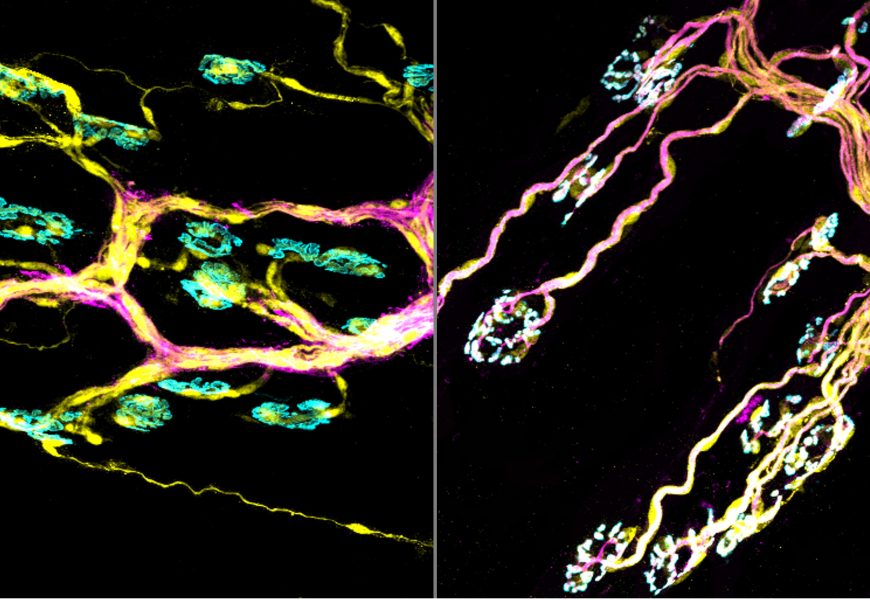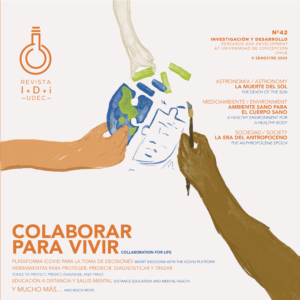You surely heard the news in April 2003 about the sequencing of the human genome, that scientists had managed to define our genetic code, and that this would bring many benefits. In fact, diseases have already been cured thanks to gene therapy, and with every piece of international research made on this technique, this just goes up and up. It looks like science fiction, but it is real science.
By Monserrat Quezada / monquezada@udec.cl / Images: Facultad de Ciencias Biológicas
The rapid progress of knowledge regarding the genetic origin of certain diseases, the sequencing, and organization of the human genome, as well as the tools that allow manipulating it, have led to the first gene therapies. This means introducing genetic material into an organ or tissue to produce a biological effect that allows preventing or treating a disease. Thus, it opens up new
possibilities to treat different conditions like, for example, healing broken bones, eliminating tumors, and the list is almost as wide as our imagination.
In recent years, we have been moved by fundraisers to treat children suffering from spinal muscular atrophy, or SMA, “a serious pathology that leads to the progressive death of motor neurons, which control coordinated muscle movement. Its origin lies in mutations that arise from the insufficient or zero production of the SMN protein, essential for the survival of these neurons. Happily, today there is a treatment alternative for this disease, through gene therapy”, or so explains Dr. Juan Pablo Henriquez of the Universidad de Concepción’s Faculty of Biological Sciences.
This gene therapy treatment consists of injecting a modified – harmless – adenovirus which, applied before the child’s second birthday, allows repairing the deficient SMA gene in the motor
neurons of children with SMA, improving their mobility and with it, their quality of life. Sadly, it is “the most expensive medicine in the world”, as has been mentioned in the media.
At UdeC
For over a decade, the Neuromuscular Studies Laboratory or NeST Lab UdeC, led by Dr. Henríquez, has worked on “modifying the expression of proteins in muscles of living animals, to study the effect of the expression or the silencing of these proteins on – in our case – neuromuscular synapses, which control muscular contraction”, he explains. “This approach is the same that is currently being used in gene therapy to fight diseases, a concept that 20 years ago
seemed futuristic and that is now being applied, for example, in the case of children with SMA.”
In particular, the current work of the laboratory, which has recently gained financing from Fondecyt for 4 years, seeks to reverse some of the pathological consequences of aging on the muscles (known as sarcopenia), and Amyotrophic Lateral Sclerosis, the disease that scientist
Stephen Hawking suffered from, and that led to the “Ice Bucket Challenge”, to bring awareness to the lack of research in the area.
Sarcopenia is a progressive generalized condition that arises from the aging of the muscular-skeletal system, characterized by the loss of muscle mass, strength, and function. “To contract, muscles need a stimulus from the motor neurons – found in the spinal medulla -, through the
so-called neuromuscular synapses, which also experience changes with sarcopenia”, he adds. “In this project, we will experimentally manipulate the activity of a group of so-called Wnt proteins in muscles of old animals with the expectation that, by inhibiting the alterations of neuromuscular synapses, this has a beneficial effect on preventing sarcopenia. We will follow a similar approach to the ALS mice model”, Henriquez mentions.
The current scientific challenge comes from a series of findings from the line of study Henriquez has taken with the research groups. Among the fruits of his postdoctoral studies at University College London (UK), he stands out as being the first to publish that some Wnt proteins could control the embryonic development of neuromuscular synapses, work that has been further developed at NeSt Lab, identifying Wnt proteins and receptors that take part in the maturing
and stabilization of neuromuscular synapses in adults. “These results represent a sound basis to study possible therapeutic applications of Wnt proteins for sarcopenia and motor pathologies”,
he assures.
In positive news, several Wnt proteins are being tested in clinical trials in other pathological contexts, such as cancer. “If we demonstrate that gene therapy based on Wnt proteins has an effect with preventing sarcopenia in experimentation animals, as we think will happen, the
impact on basic science and its potential therapeutic applications are enormous. And that is happening right here at the Universidad de Concepción”, he concluded.
For more information: jhenriquez@udec.cl
Last modified: 2 de junio de 2023






